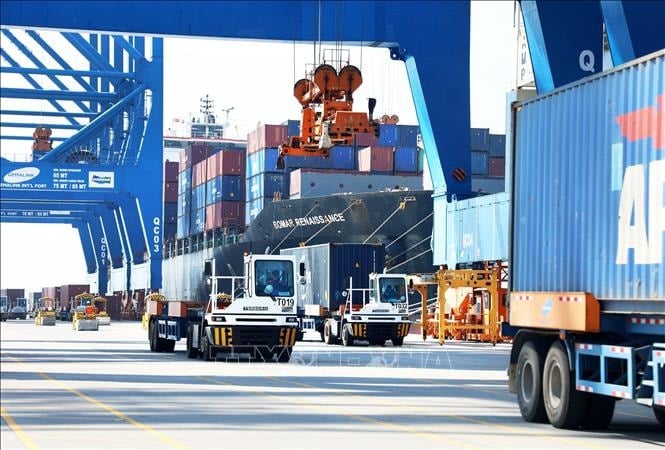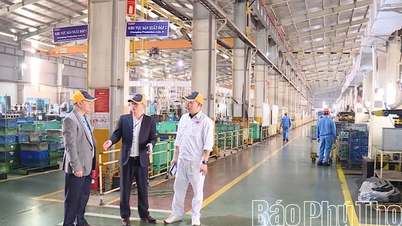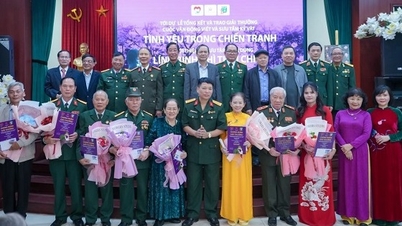The macroeconomic foundation is sufficient to take advantage of the “reciprocal window”.
On October 26, 2025, Vietnam and the United States agreed to release a Joint Statement on the Framework for a Reciprocal, Fair, and Balanced Trade Agreement (the Joint Statement) on the occasion of President Donald Trump and Prime Minister Pham Minh Chinh attending the ASEAN Summit in Kuala Lumpur, Malaysia. The core of this agreement is the US lowering its "reciprocal tariffs" on goods originating from Vietnam to 20% (from 46%), as per the US President's executive order.
Looking at the Vietnamese economic landscape, it's clear that the macroeconomic foundation is strong enough to take advantage of the "reciprocal window."
Vietnam's economy accelerated in the third quarter of 2025 (8.23% year-on-year growth), bringing the nine-month growth rate to 7.85% – among the highest in 11 years. Inflation remained in the 3.27-3.38% range for nine months, allowing monetary and fiscal policies to coordinate to support growth while maintaining price stability. National exports for the nine months were estimated at US$348.7 billion (a 16% increase); exports to the United States alone reached US$112.8 billion, further solidifying Vietnam's position as the number one market. These figures demonstrate the recovery of external drivers while maintaining positive macroeconomic conditions domestically.

Export activities at the Cai Mep - Thi Vai port cluster. Photo: Hong Dat
In terms of production, the Industrial Production Index (IIP) increased sharply year-on-year; retail sales in the first nine months increased by approximately 11%, reflecting domestic demand in sync with exports. Despite short-term adjustments in some product groups after the US imposed a 20% tariff from July-August 2025, the third quarter picture still shows the industrial and export sectors weathering the storm thanks to electronics, chemicals, and processed agricultural products.
Lowering the reciprocal tariff to 20% essentially establishes a new "risk ceiling," instead of leaving businesses facing the previously stated 46%. At the same time, the US leaves open the possibility of applying a 0% tariff rate to certain categories of "like partners" if they meet the criteria, creating an incentive for Vietnam to improve non-tariff barriers and the level of openness in each sector. This is a "two-way reciprocity": benefits are tied to compliance conditions, not unlimited preferential treatment.
Two points are important to note: the US is simultaneously tightening tariffs by 40% on transit goods – signaling stricter control over rules of origin; and US trade is cyclical – the risk of adjustments based on election scenarios and trade defense investigations is ever-present. Therefore, Vietnamese businesses can only transform this "window of opportunity" into a "sustainable advantage" if they invest seriously in traceability, labor, environment, intellectual property protection, and compliance data.
With a target of high annual growth (8.3 - 8.5%), the 20% reciprocal tax can be seen as a regulating valve to help lock down tariff fluctuations, increase the predictability of orders in the fourth quarter; attract capital and "conditional" orders into industries that meet high standards; and promote the transformation from processing to manufacturing and services with high technology and data content.
But to "seal the deal" for 2025, four key policy initiatives need to be implemented simultaneously.
Firstly, remove non-tariff barriers in line with US/EU standards. Review and simplify specialized inspections; expand the mutual recognition mechanism for conformity assessment results; and ensure transparency in the licensing process for medical devices, pharmaceuticals, and vehicles that meet US standards, as stated in the Joint Declaration. Expediting this process will help businesses reduce customs clearance time and costs.
Secondly, data and digital trade – the “proof of compliance” corridor. Establish a National Compliance Data Portal for the US market: a library of rules of origin based on HS codes; ESG reporting templates – labor; guidelines for tracing raw material sources using QR/RFID codes; and early warning systems for trade defense investigations. Incorporate standards for data protection, storage, and cross-border data transfer into a digital trade framework compatible with commitments.
Thirdly, export financing should be targeted and risk-mitigated, with preferential credit packages linked to technological innovation, automation, and ESG conditions for businesses with export contracts to the United States; export credit insurance and exchange rate/interest rate derivatives should be implemented, especially for aviation, textile, and wood businesses.
Fourth, link FDI with domestic enterprises to increase the value-added ratio in Vietnam; encourage co-production in electronics, textiles, and aerospace equipment; and build supporting industrial clusters linked to cold logistics. The goal is to increase localization, reduce dependence on imported raw materials from third countries, thereby reducing the risk of being subject to a 40% transit fee.
Three key policy monitoring questions
During this socio-economic discussion session, the National Assembly needs to pose three key policy oversight questions.
Firstly , to what extent will implementation be carried out? A clear roadmap and timeline are needed for ministries and agencies to finalize technical regulations (standard recognition, expedited licensing, intellectual property, data). Secondly, what support will businesses receive to meet the conditions? Thirdly , how will the quality of growth be measured? Beyond export turnover, indicators such as export profit margin, percentage of long-term orders, localization rate, number of trade defense investigations/recalls, and average customs clearance time are needed. These are policy outputs that reflect the true capacity for integration.
In short, the 20% reciprocal tax is a "take-off ticket," not a "safe harbor." Externally, it affirms Vietnam's strategic confidence and role in restructuring regional supply chains. Internally, it compels us to raise institutional standards, standardize data, and improve the professional standards of businesses. When "reciprocity" is understood correctly as jointly raising standards – not just tax concessions – Vietnam can transform 2025 into a turning point from growth based on incentives to growth based on capacity.
In the short term, achieving the 2025 target is feasible if we streamline non-tariff barriers, operate the compliance data portal, quickly disburse public investment for logistics and energy, and maintain inflation at 3-4% to nurture domestic demand.
In the medium term, signing and fully implementing the reciprocal trade agreement will be the "runway" for the 2026-2030 period: higher value exports, deeper localization, and better supply chain resilience.
Source: https://daibieunhandan.vn/tang-truong-dua-tren-nang-luc-thay-vi-uu-dai-10393569.html



![[Photo] Prime Minister Pham Minh Chinh receives Lao Minister of Education and Sports Thongsalith Mangnormek](/_next/image?url=https%3A%2F%2Fvphoto.vietnam.vn%2Fthumb%2F1200x675%2Fvietnam%2Fresource%2FIMAGE%2F2025%2F12%2F16%2F1765876834721_dsc-7519-jpg.webp&w=3840&q=75)
![[Live] 2025 Community Action Awards Gala](/_next/image?url=https%3A%2F%2Fvphoto.vietnam.vn%2Fthumb%2F1200x675%2Fvietnam%2Fresource%2FIMAGE%2F2025%2F12%2F16%2F1765899631650_ndo_tr_z7334013144784-9f9fe10a6d63584c85aff40f2957c250-jpg.webp&w=3840&q=75)

![[Photo] Prime Minister Pham Minh Chinh receives the Governor of Tochigi Province (Japan)](/_next/image?url=https%3A%2F%2Fvphoto.vietnam.vn%2Fthumb%2F1200x675%2Fvietnam%2Fresource%2FIMAGE%2F2025%2F12%2F16%2F1765892133176_dsc-8082-6425-jpg.webp&w=3840&q=75)
![[Image] Leaked images ahead of the 2025 Community Action Awards gala.](/_next/image?url=https%3A%2F%2Fvphoto.vietnam.vn%2Fthumb%2F1200x675%2Fvietnam%2Fresource%2FIMAGE%2F2025%2F12%2F16%2F1765882828720_ndo_br_thiet-ke-chua-co-ten-45-png.webp&w=3840&q=75)

































































![[Video] Independence and self-reliance linked with international integration through 40 years of reform](https://vphoto.vietnam.vn/thumb/402x226/vietnam/resource/IMAGE/2025/12/16/1765899635777_1-1-8054-png.webp)




































Comment (0)